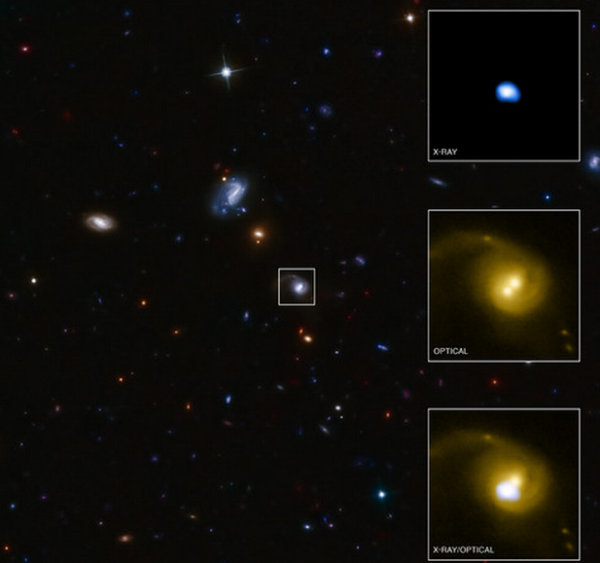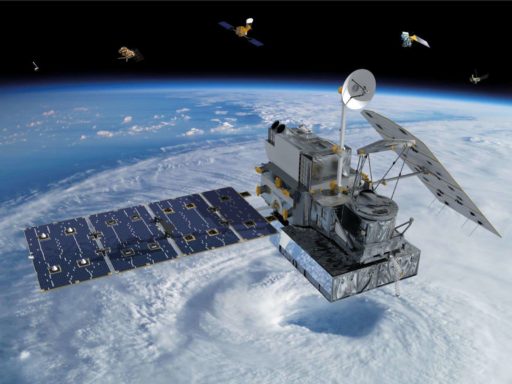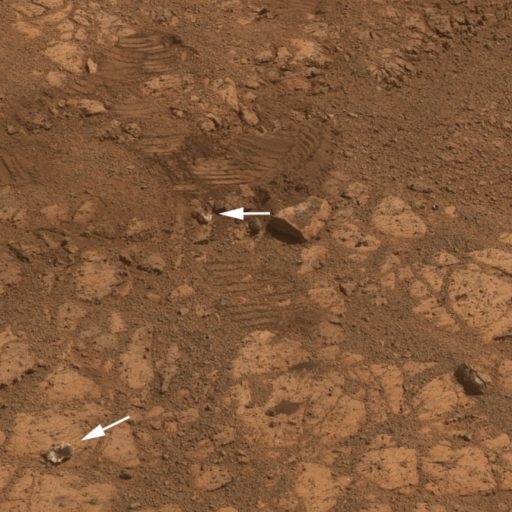Recently, researchers at NASA’s Chandra X-ray Observatory have said that they’ve seen evidence of a massive black hole is being ejected from its host galaxy. The ejected black hole is travelling at a speed of several million miles per hour. According to new observations from NASA’s Chandra X-ray Observatory, the black hole might have collided and merged with another black hole for which it received a powerful recoil kick from gravitational wave radiation.
According to the researchers, the evicted black hole weighs millions of times the mass of the sun. Question raises, how the black hole got evicted and gained such speed? Though, Albert Einstein predicted about the ‘gravitational waves – ripples in the fabric of space – long ago, such events were not noticed before. The ejection of a black hole from a galaxy by recoil is very rare. Now that the astronomers have seen the evidence of ejection, they are hypothesizing when this galaxy collision occurred and the supermassive black holes in the center of each galaxy collided. The two black holes then merged to form a single black hole, that recoiled from gravitational waves produced by the collision, giving the newly merged black hole a sufficiently large kick for it to eventually escape from the galaxy. For more information about gravitational waves, visit Einstein-online or else you can visit The Conversation.
To know the facts more deeply about the incident, Francesca Civano of the Harvard-Smithsonian Center for Astrophysics (CfA) and her group is using a system known as CID-42, located in the middle of a galaxy approximately 4 billion light years away. Previous Chandra observations had detected a bright X-ray source likely caused by super-heated material around one or more supermassive black holes. Unfortunately, they were unable to distinguish from which source the X-rays came from because Chandra was not pointed directly at CID-42. But with the help of the new data, researchers think that CID-42 is the byproduct of two galaxies collision.
For more images of the black hole being evicted from its galaxy, visit Examiner.
But is that the real explanation of the question? May be not. Because, there are two other possibilities. One states while the three supermassive black holes collided, the lightest black hole was ejected. The other possibility is CID-42 contained two supermassive black holes spiraling toward one another, rather than one moving quickly away. Till now, it’s not clear which explanation is the right one. For more details, visit NASA.
Source : NASA
Thanks To : Examiner
[ttjad keyword=”solar-device”]




